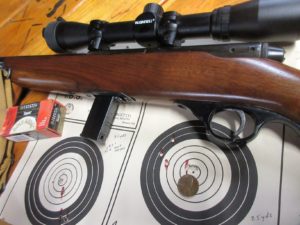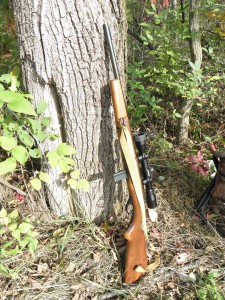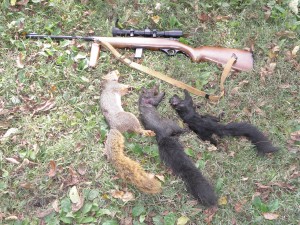Rimfire Accuracy Tips for Hunting
By Glen Wunderlich
Charter Member Professional Outdoor Media Association (POMA)
Small game season begins September 15th and that means getting gear in order for a trip to Michigan’s North country. With a camping reservation at the Rifle River Recreation Area, it was time to sight in one of my favorite .22 caliber rimfire rifles: a scoped, 73 year-old, O.F. Mossberg model 152.
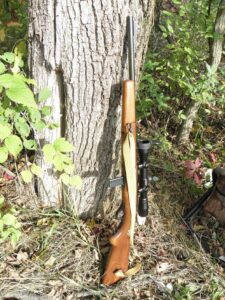
Mossberg Model 152 with Folding Forearm and Bushnell 4X Rimfire Scope
First on the agenda was cleaning of the vintage semi-auto carbine – an important step in readiness and often overlooked until feeding or extraction troubles force the issue.
Next, 5 cartridges were removed from a box of Lapua Center X .22 rimfire ammo and loaded into the magazine to begin the process of sighting in.
With a sandbag-rest I fired a total of 3 shots at a target 25 yards downrange and quit. The reason: The 3 shots were in a tight cloverleaf group slightly above center – perfect for the desired 50-yard zero with the super accurate, sub-sonic fodder.
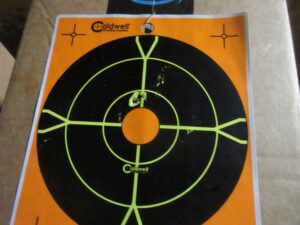
A real tack driver
There was no good reason to burn up more expensive ammo, as one critical matter was crossed off the camping list.
Here are some tips to get the most out of your favorite rimfire.
Experiment with sub-sonic ammo, which may be referred to as standard velocity or target ammo. Most of this type of ammo may cost more than bulk ammo in a milk carton, because of supply and demand, but it is more than adequately effective on small game. It’s also relatively quiet compared to high-velocity options and that can be helpful in the woods.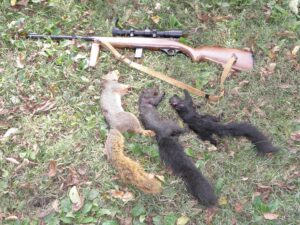
Get the proper rimfire scope. Good glass can be expensive, but most folks will do well with more entry-level optics specifically designed for rimfires’ related distances. A big mistake is to mount a typical scope designed for high-power calibers. Although they make look good, they won’t produce the accuracy because of parallax, which is a difference in the apparent position of an object viewed along two different lines of sight. It can fool a shooter into questioning causes of inaccuracy.
Too see parallax, put the scoped firearm on a bench with a solid rest. Then, without touching anything, peer through the lens and move your head in different positions, while viewing the target. If the crosshairs appear to move as you move, you have experienced parallax – an accuracy killer!
Several options exist and include not only rimfire scopes, but red dot optics and those with adjustable objective lenses, referred to as AO. Red dot scopes essentially eliminate parallax but typically have no magnification, although magnifiers can be added to high-end models.
Adjustable objective scopes eliminate parallax when the proper distance is dialed in; however, they are typically larger optics and somewhat cumbersome to operate during changing field conditions.
An inexpensive alternative is a fixed 4-power rimfire scope for a solid, all-around solution. Also, air gun scopes are well suited, because their parallax is set at the factory for the shorter ranges of rimfire rounds.
Understand that a reticle for hunting may utilize thicker crosshairs that are visible in low-light; conversely, a target scope will have very fine crosshairs conducive to controlled lighting in target shooting or clear daylight.
Finally, a good trigger is one that breaks cleanly without any stickiness and excess travel. If yours doesn’t, a qualified gunsmith may be able to help, although results are sometimes limited with old trigger mechanisms.
On the other hand, an example of modern technology is apparent in the highly successful and relatively affordable Ruger model 10/22 semi-auto. It is a reliable work of engineering that can be modified in any way imaginable to produce the utmost in accuracy.
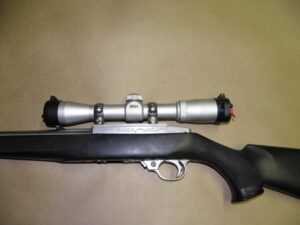
Ruger 10/22 with silver Nikon Scope
So, there you have it – a few options to achieve more enjoyment from the little .22 – the most popular caliber in the world.

